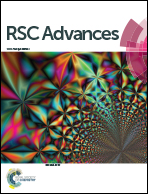Thienopyrimidine sulphonamide hybrids: design, synthesis, antiprotozoal activity and molecular docking studies†
Abstract
A series of hybrid compounds containing the thienopyrimidine scaffold as a DHFR inhibitor fused with a bioactive sulphonamide piperazine skeleton were synthesized and evaluated against the chloroquine and pyrimethamine resistant K1 strain of Plasmodium falciparum and the HM1:1MSS strain of Entamoeba histolytica, respectively. A few of the compounds showed better results than the standard drugs. The toxicity of the hybrids was measured on the Chinese hamster cell line. The majority of the compounds had low toxicity. The binding modes of the most potent antimalarial compounds (5, 6 and 8) were also investigated against PfDHFR using molecular docking and enzyme binding studies, whereby 5 and 6 were found to the most promising against PfDHFR. The present studies suggest that these hybrids might be possible antiprotozoal lead compounds worth further investigation.


 Please wait while we load your content...
Please wait while we load your content...